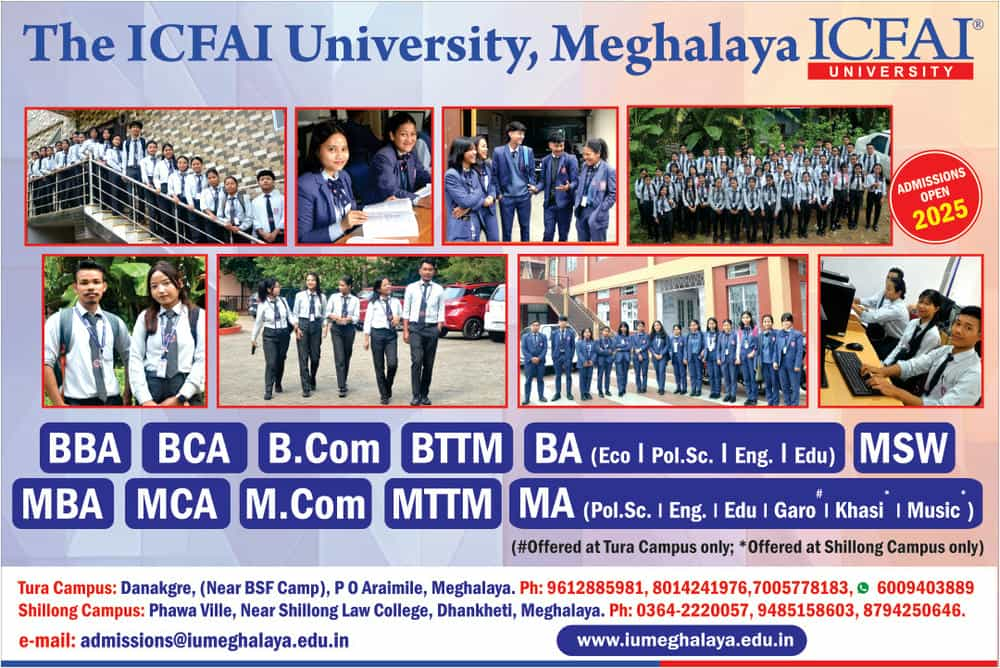AI and QR codes to authenticate Meghalaya’s Handloom products

On the heels of the successful showcasing of the State’s Ryndia Handloom products at the G20 International Crafts Bazaar, the Department of Textiles, Government of Meghalaya, in collaboration with the NEHHDC (North East Handloom & Handicraft Development Corporation), launched a pilot project on the “Digitalization of Handloom” products at the Umden – Diwon Eri Silk Village on Friday. Present at the occasion are FR Kharkongor, IAS, Commissioner & Secretary, Textiles, RK Singh, M.D. of NEHHDC, representatives of prominent local Eri production houses from the Silk Village and other parts of Ri-Bhoi District, Weaver Associations, Voluntary Organizations (VO), officers of Textiles Department, local village heads, and the NEHHDC team at the Duya Hall, Umden-Diwon.
In his remarks, FR Kharkongor, IAS Commissioner & Secretary, emphasized the urgent need and importance of blending technology and tradition, right from the loom to the home and from thread to trend. He mentioned that he had recently received reports from Delhi about non-local entrepreneurs fraudulently marketing imitation, non-handmade, and non-organic Meghalaya Eri (Ryndia) peace silk, charging high rates ranging from 19,500 to 24,000 rupees, claiming that they were selling Meghalaya’s famous ethically sourced, organically produced, naturally dyed, and gender-driven Ryndia stoles at steep prices.
He highlighted that with the introduction of Artificial Intelligence (AI)-driven technology, QR Codes would now be woven into fabric to carry information about the authenticity of the unique handloom products of the state in general and the Eri Silk Village in particular, authenticating this special product. He welcomed the collaboration of NEHHDC as a technological partner in rolling out this project through Internet of Things (IoT) devices in local handlooms to generate QR Codes, contributing to efficient traceability and empowering customers with product origin knowledge. This traceability would authenticate the product’s journey from the farm to the fiber, fiber to fabric, and fabric to fashion. Simultaneously, weavers and local designers would benefit from digital traceability, enabling them to charge a higher premium for their artistically designed hand-woven products, known worldwide for being natural, eco-friendly, and gender-driven. The technology would also enhance the reputation of handloom products from the Silk village and the state in general.
RK Singh, M.D. NEHHDC, also welcomed the technology-driven collaboration with the Department of Textiles and mentioned their ambitious target of covering more than 10,000 looms across the region. He explained that when a buyer scans the QR Code, they would learn about the product’s origin, type of yarn, and see a small video showing how the product was woven and where it was woven. This traceability, while authenticating the unique and superior quality of Meghalaya’s handloom products, would provide wider recognition of the skill and dexterity of its nimble women weavers. The M.D. also mentioned that Prime Minister Narendra Modi had recently interacted with a Meghalaya weaver at the NEvolution event and was greatly impressed with the technology and its benefits to the weaving community.
He further indicated that NEHHDC, in collaboration with the Department of Textiles, would adopt another 500 weavers in Meghalaya with a focus on the Silk Village through its project, “Market Development Through Digitalization, Authentication, and Traceability Implementation in the Handloom Sector.” This initiative would further enhance the reputation of Ryndia across the region, country, and even at international levels. He noted that the Silk village had all the ingredients of a potential “niche handloom export hub.”
Other speakers included P Tmung, President of the Ryndia Growers Association, I Rymbai Eri Weaves entrepreneur, who is a beneficiary of this technology, Iba Mallai, Proprietor of KINIHO, and a prominent local production house from the Eri Silk Village. The event also featured a detailed technical presentation and demonstration, raising awareness about the pioneering digitalization initiatives undertaken by the technical team of NEHHDC. This initiative is set to benefit the weavers of the Eri Silk Village in the first phase, followed by weavers across the state.
Before the program, the teams visited the DIRC (Design Innovation Resource Centre) set up by the Department of Textiles at the Eri Silk Village, which showcases the entire value chain of Ryndia and educates visitors and researchers on various eco-driven practices such as natural dyes, organic sourcing of products, design patterns, and various other ethical practices.

Leave a Reply